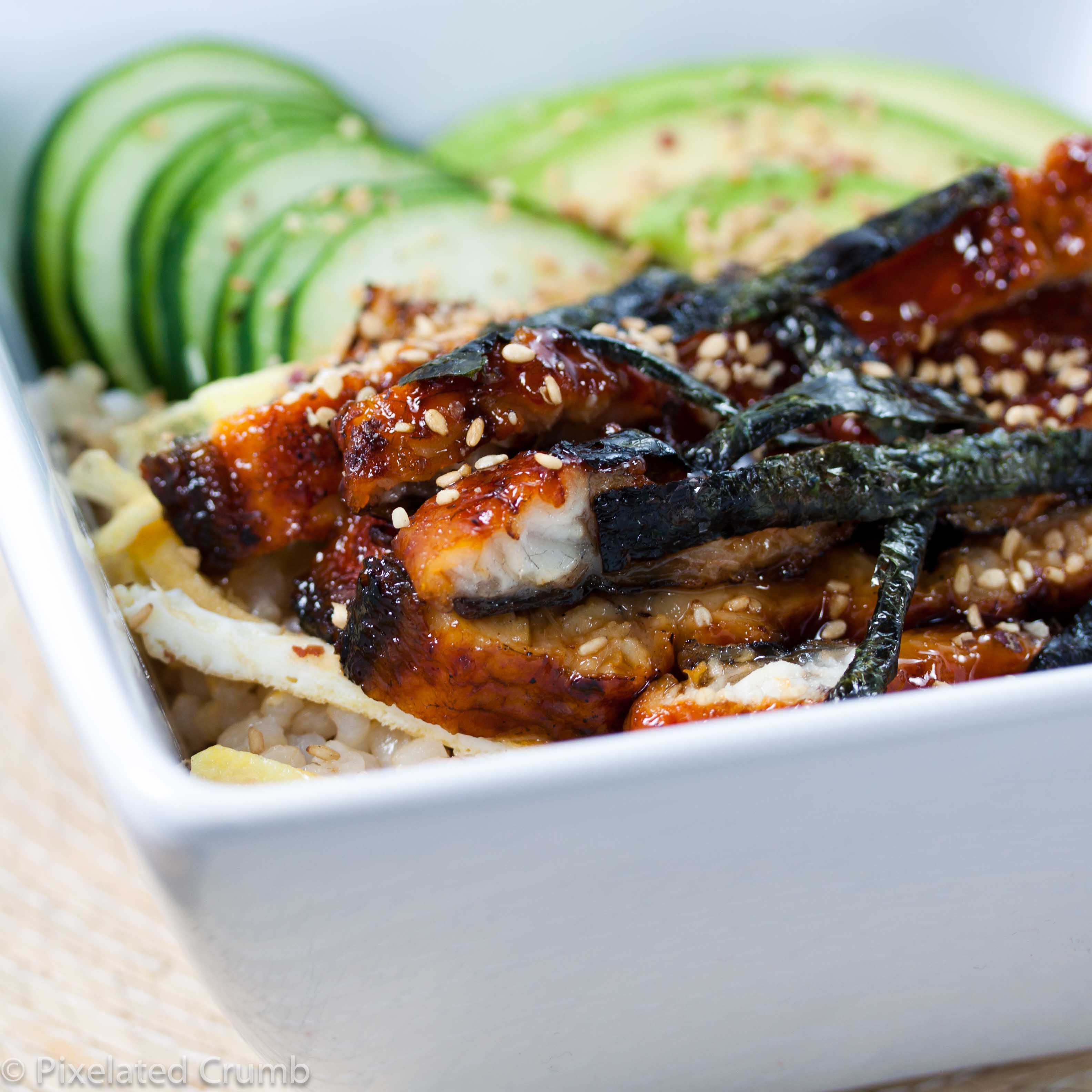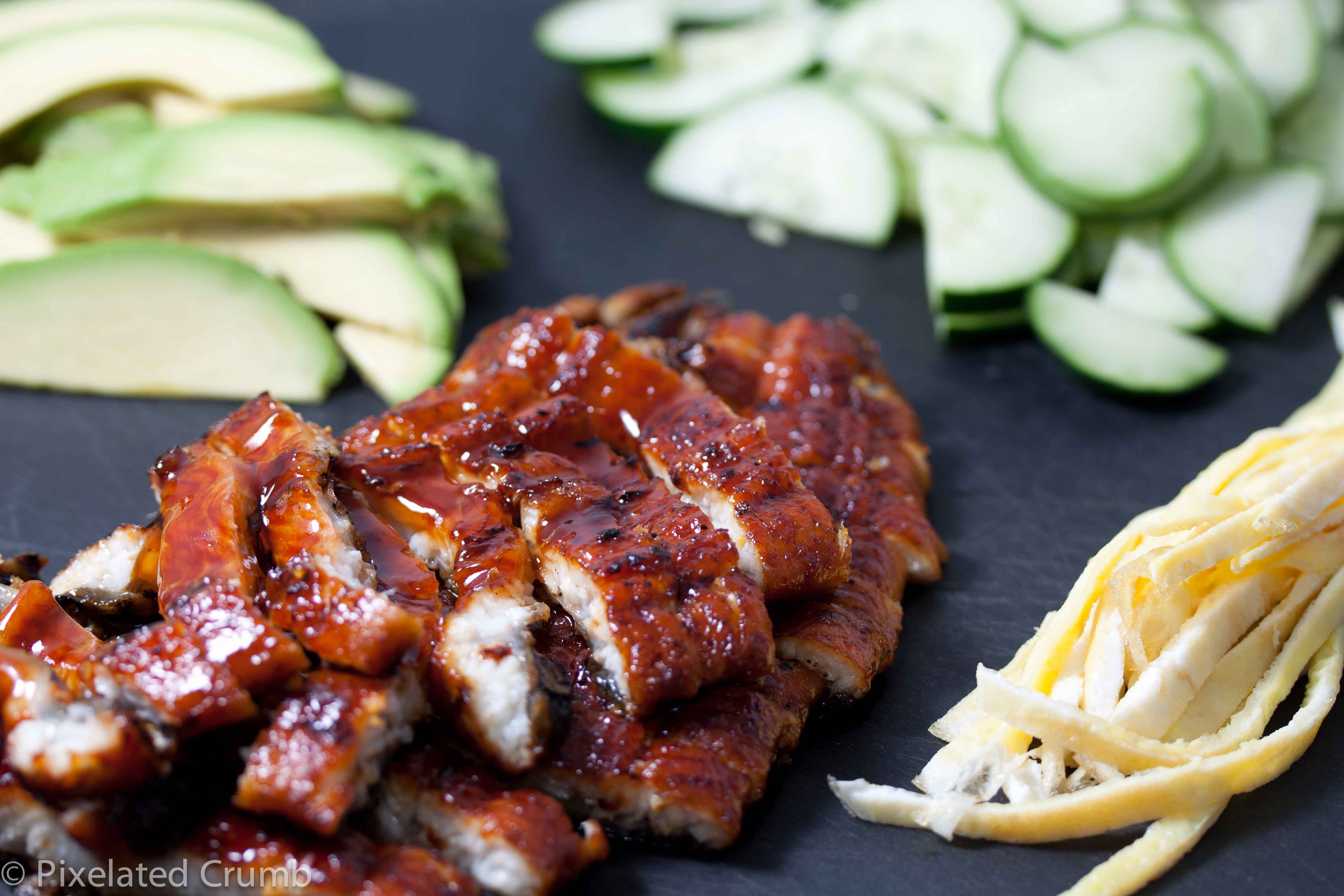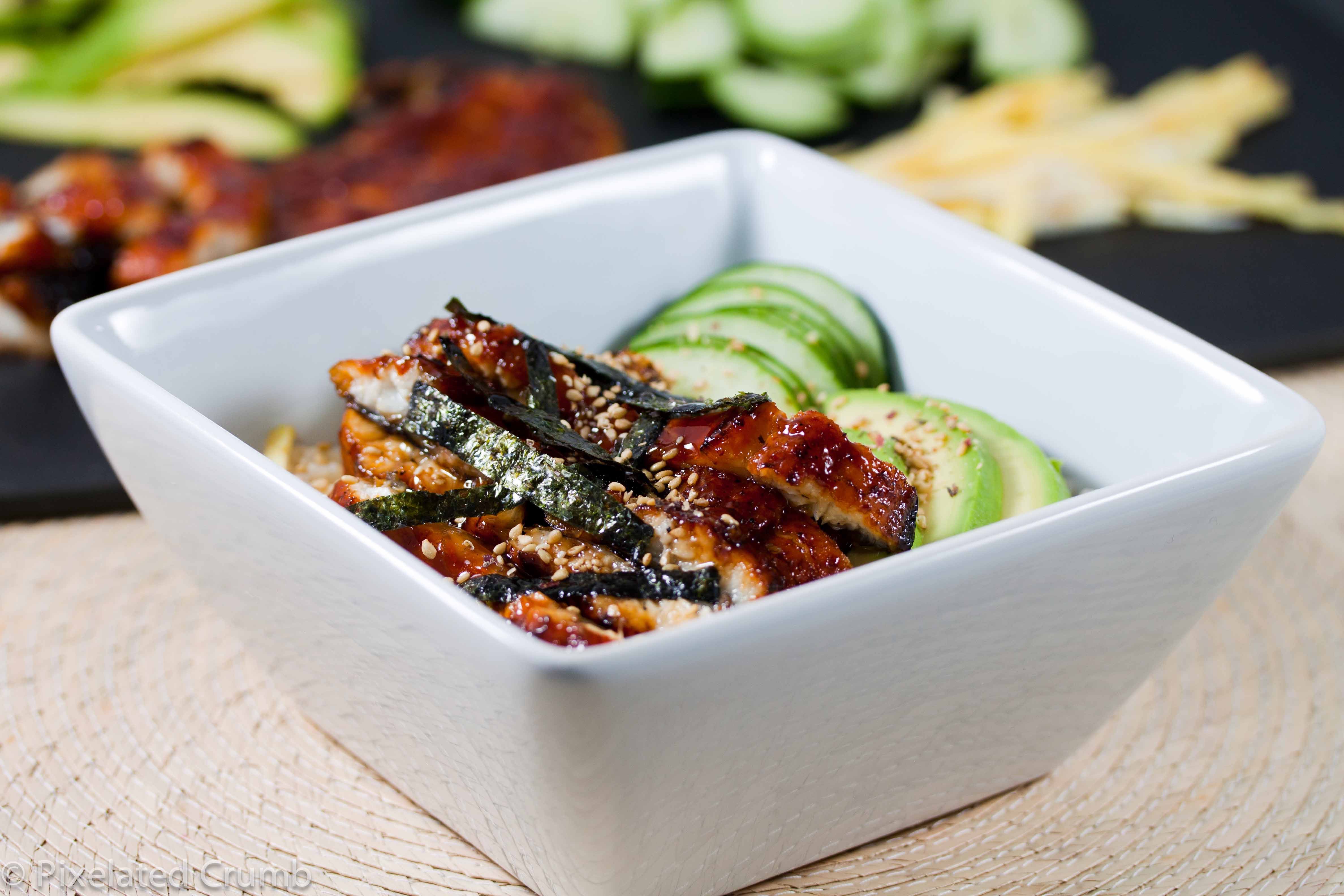Unagi-Don (Unagi Sushi Rice Bowl)

If you had told me 15 years ago that one of my absolute favorite foods was eel, I would have laughed and told you you were out of your mind. I mean, who eats eel? That’s just craziness. today, freshwater eel, or unagi, is absolutely one of my favorite things. When we go out for sushi, I always save a piece of unagi nagiri for last so that I can end my meal with that perfect bite.

I’m a sucker for sauces and condiments and I just can’t get enough kabayaki sauce, the salty/sweet barbecue-like sauce it’s basted in. After your tongue gets a hit of the kabayaki sauce, you bite through the crunchy exterior to find that it’s melt-in-your-mouth succulent and smokey on the inside. It’s a wonderland of flavor and texture and once I finally tried it, I knew that unagi and I were going to have a very strong lifelong relationship.

Imagine my horror then, when I found out that unagi is on the seafood watch list for being unsustainable. The eels have been severely overfished leading to a serious decline in the eel population in the last 50 years, and farmed eel cause lots of other environmental problems. When Joseph and I were in San Francisco almost two years ago for our honeymoon, we went to Tataki, a socially responsible sushi bar, and they had an unagi substitute. I was so excited with the prospect of a more sustainable substitute, but it didn’t even come remotely close to hitting the same note. Alas, all I can say is try to cut down your consumption of this scrumptious treat so we can enjoy it for generations to come.

When you are going to treat yourself to unagi at home, do it justice by serving it with perfectly seasoned sushi rice and pairing it with the perfect accoutrements. The soft, creamy avacado and cool, crisp cucumber here cap off what is in my mind, one of the best meals you could prepare yourself.
Unagi-Don #
Adapted from Nook & Pantry
You can usually find frozen vacuum-sealed unagi in Asian supermarkets. If you can’t find any, you can substitute shrimp or crab.
Serves 4
7 ounce unagi fillet cooked according to package instructions
1 large egg, beaten
salt
1 teaspoon canola oil
Cucumber slices
Avocado slices
Nori, cut into thin slivers
2 teaspoons toasted white sesame seeds
Kabayaki Sauce (recipe follows)
Sushi Rice (recipe follows)
Usually unagi is fully cooked so you just need to warm it up in the oven. Prepare it to package instructions (if you can read them, which we couldn’t because they were in Japanese), or bake it in a 400F oven for about 10-12 minutes until heated through.
Beat the egg with a pinch of salt. Heat the oil in a large nonstick skillet over medium heat. Pour in the beaten egg and swirl the pan to cover the pan evenly with a thin sheet of egg. When the egg looks almost set, shake the thin egg sheet onto a large plate then flip the egg into the skillet again to cook the second side. The entire process will take about 2 minutes. Julienne the egg into thin strips.
Add a portion of sushi rice in a bowl then top with egg strips, cucumber slices, avocado slices, nori slivers, and unagi. Drizzle with kabayaki sauce to taste and sprinkle with sesame seeds.
Unagi Kabayaki Sauce
1/4 cup soy sauce
1/4 cup mirin
1 tablespoon white sugar
Combine the soy sauce, mirin, and sugar and simmer gently in a small saucepan until slightly thickened, being careful not burn.
Sushi Rice
We used short grain brown rice for a nuttier flavor and chewy texture. It’s more nutritious than white rice, too, with extra fiber and nutrients.
2 cups short grain brown rice
4 cups water
1/4 cups rice vinegar
2 tablespoons sugar
1/2 teaspoon salt
Cook the rice in the rice cooker. If cooking the rice on the stove top, bring the water to a boil and then add the rice. Reduce the heat to low, cover and simmer for 40 minutes (or according to package directions).
Dissolve the vinegar, sugar, and salt either in a saucepan over low heat or microwave for 30 seconds until the solution is warm. Whisk to dissolve.
When the rice is finished cooking, pour the vinegar mixture over the rice and use a rice paddle or spatula to gently fold the rice. Be careful not to smash the rice. Let the rice cool until it is about 100F.